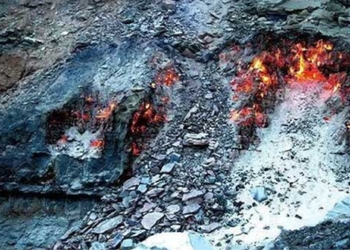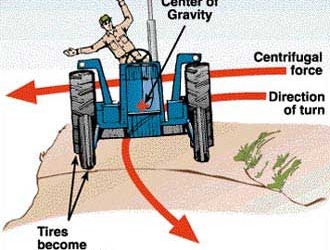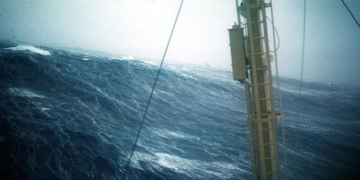The super deep borehole drilled in the Xinjiang Autonomous Region in northwest China reached a depth of 10,000 meters on February 4 and will go even deeper, marking a breakthrough in Earth exploration.

Shenditake 1 borehole viewed from above. (Photo: Xinhua).
Located in the Taklimakan Desert within the Tarim Basin, the Shenditake 1 borehole is approaching its designed depth of 11,100 meters upon completion. This is the first Chinese scientific exploration borehole to exceed a depth of 10,000 meters, according to CGTN. Since drilling commenced on May 30, 2023, the borehole has penetrated 13 continental strata, with over 1,000 drilling pipes extending straight into the Earth and more than 20 drill bits used throughout the process.
“This is the first time China has drilled a vertical borehole deeper than 10,000 meters,” said Wang Chunsheng, an expert at the Tarim Oilfield of the China National Petroleum Corporation, the agency overseeing the drilling process.
Situated between the Tianshan and Kunlun mountain ranges, the Tarim Basin is one of the most challenging areas to explore due to the harsh surface environment and complex underground conditions. According to Wang, after reaching the depth of 10,000 meters, drilling will face even stricter challenges, such as temperatures exceeding 200 degrees Celsius and pressures over 130 MPa.
The deepest vertical well in the world currently exceeds 12,262 meters. Jia Chengzao, a scholar at the Chinese Academy of Sciences, stated that Shenditake 1 will become the second deepest vertical well in the world and the deepest in Asia, marking a significant milestone in the study of Earth sciences as well as ultra-deep oil and gas exploration.
Currently, the drill bit is penetrating rock formations that were formed 500 million years ago. During the drilling process, geologists are collecting rock samples from various depths and strata. “At this stage, our basic understanding of the formation of oil and gas reserves at a depth of 10,000 meters remains hypothetical. After this drilling project, some hypotheses will be confirmed or adjusted, while others will change based on the information we gather,” shared Zhao Wenzhi, an expert at the Chinese Academy of Engineering.





















































